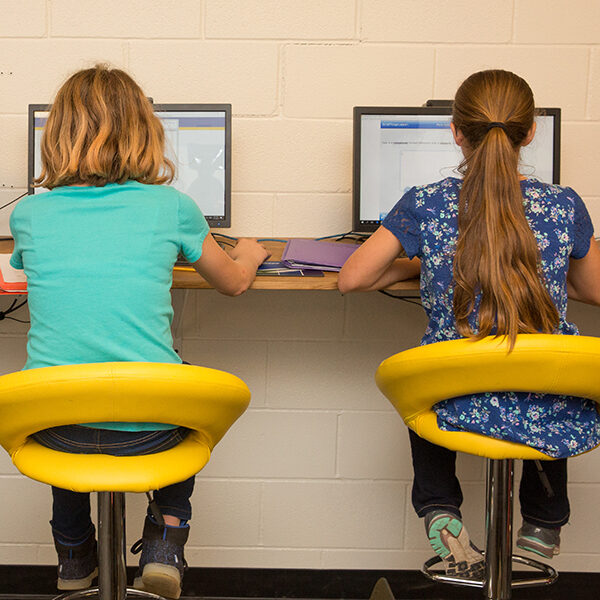
This blog was originally published on the Brookings Institution’s Brown Center Chalkboard.
Blended learning research is at a very interesting crossroads when it comes to interests of the public school system, nonprofit organizations, corporate entities, private research firms, and traditional academic institutions. There are several ongoing initiatives dedicated to disseminating research to practitioners with the goal of applying evidence in the implementation of blended learning. Such a focus on translating and disseminating research may suggest two things: that the evidence base is robust, and/or that academic publication is now an exercise in futility. Neither of these is true, and in fact the need to both uncover and document evidence, as well as publish them in peer-reviewed spaces, has perhaps never been greater for the sector.
The effectiveness of using technology for education is being studied by many in a variety of ways and with a variety of goals. But it seems as though traditional academic institutions are lagging behind in producing research about blended and personalized learning in K-12 settings. This especially shows in the research produced by graduate students; a recent analysis of theses and dissertations on blended learning found that K-12 focused research accounts for less than 10 percent of that literature, with the rest focused on postsecondary settings. Further, both the special issue of the Journal of Online Learning Research that focused on K-12 blended learning research and practice — guest edited by Saro — as well as the TLA Blended Learning Measurement Fellowship — that Emily is a part of — garnered far fewer submissions of research studies than would be expected from a thriving, vibrant field.
This blog post is a friendly plea to researchers about the value (outside of tenure) of publishing research about blended and personalized learning in academic journals.
First, think about the graduate students of the future who are looking for high-quality research. Two typical databases that students use to find education research include the Education Resource Information Center (ERIC), and Google Scholar. There is a dearth of research focused on K-12 blended (or personalized) learning in these databases. It’s not because research isn’t happening in this area, but because most research being conducted in the field is usually not making its way to academic publication outlets (from which these databases draw).
This “democratization” of publication is almost certainly happening broadly across fields, but blended and personalized learning, perhaps unsurprisingly, seems to be out ahead of this trend. It is precisely because blended learning is a newer field that we need to take the time to build a vetted, robust evidence base. Relatively high-stakes decisions are being made on more unsteady ground than previously has been the case in education, and is the case in other sectors. Scaling and expanding blended and personalized implementation without peer-reviewed research creates the potential to harm students and can hinder its own progress.
Some may respond: “But, of course, there is still the internet! Just search that!” Here, the value of peer review is that it serves to vet publications so that we know we can trust the research we access. In addition, the process of citation allows peer-reviewed articles to have greater longevity and provenance (both historical and future-facing), which also adds to our ability to dig deeper and decide the extent to which we trust the work. Another drawback of finding sources from the internet is that many times vocabulary differences tend to conceal relevant results. Both blended learning and personalized learning have multiple definitions and several near-synonyms; how do graduate students know they aren’t missing research that is insightful and important when researchers use different terminology? ERIC has a nice thesaurus feature built into it that helps students find synonyms and appropriate search terms, which is a big plus.
Even if alternative sources utilize the same vocabulary, often there is a lack of disclosure in methods. If researchers publishing outside of peer-reviewed journals are not held to a standard for disclosing methods, how are we to ensure trustworthiness of the data? A white paper may look shiny and official to the general public, but an academically minded researcher will want to know a lot more in-depth information about how information was obtained than is usually disclosed. The peer-review process, while not completely foolproof, has been a standard vetting procedure for years to ensure appropriate disclosure of how a study was carried out.
The peer-review process can feel lengthy, inelegant, and maybe even antithetical to blended and personalized learning, but there are benefits. Fifteen years ago, there were debates about whether or how academic journals would put their contents online, and whether the peer-review process would stay the same or become more open. The question now is not so much about whether journal contents should be online (almost all are), but about the standards of educational research by any group. We care about ethics and honesty in education; publishing about blended learning, its benefits, and its drawbacks should be a transparent endeavor. We also should help one another in this field of blended learning in K-12, where scholarly research is underrepresented.
Assuming that relevant, actionable K-12 blended learning research is being conducted, here are some suggestions that that might be used going forward to preserve its place in the peer-reviewed literature:
- Submitting articles to open journals and paying for or requesting open access of the material is one way that researchers outside of tenure-track academia can contribute to the richness of available scholarship.
- Offering more incentives for publishing in peer-reviewed journals, which could be provided either by the companies conducting research, or by the journals themselves. This could be as simple as ed tech companies and districts pledging to support the peer review and publication of evidence about their blended learning initiatives, instead of requiring these to be confidential or self-published.
- Making sure that educators and researchers in this area are critical consumers of the research so they can detect flaws in methodology or biases that are not explicit; corporate-sponsored research will undoubtedly have some bias toward products that they provide in educational settings.
These recommendations may seem familiar. Unsurprisingly, they are very similar to the recommendations Saro has made in the past to ensure that research findings are more accessible and consumable by practitioners of blended learning. The goals of increasing rigorous research publication and increasing the translation and application of said research are not at odds — rather, both goals work hand-in-hand. Academic publication and broad dissemination of findings are not a zero-sum game. We can and must do both if blended learning is implemented as a vehicle for giving all students the opportunity to reach their full potential.

